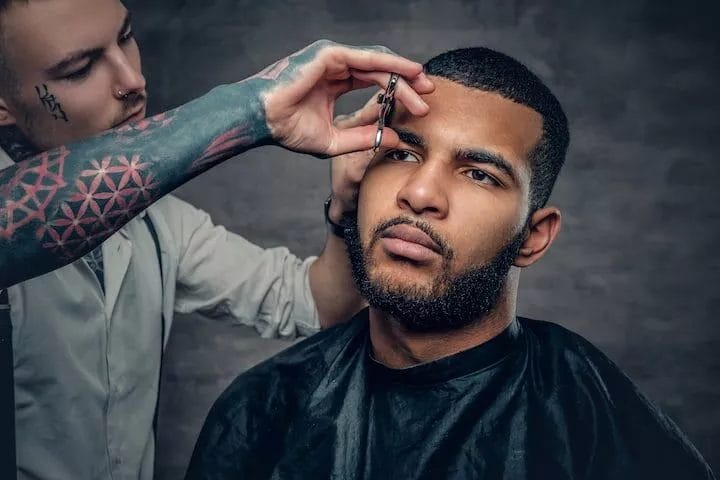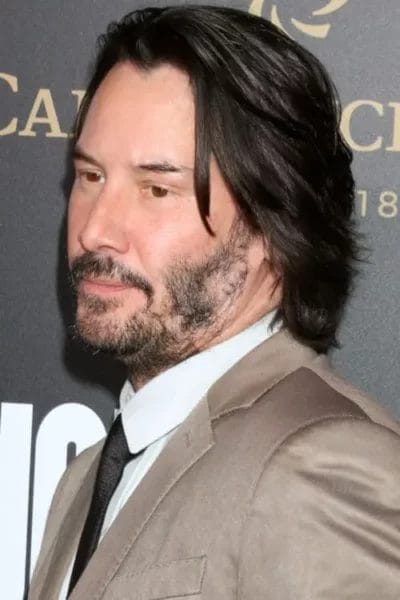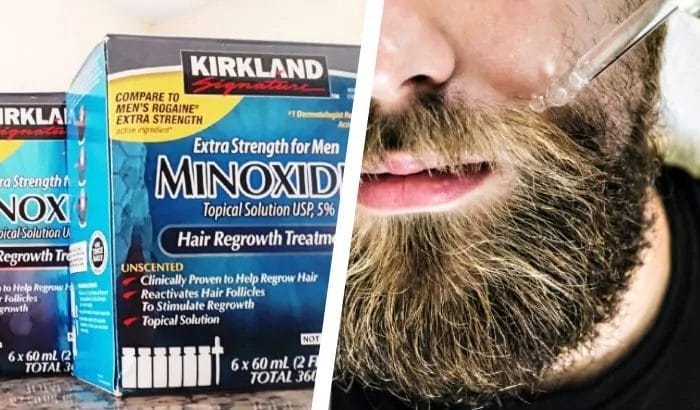Patchy Mustache: Embrace Your Unique Facial Hair Journey!
Feeling a little patchy about your facial hair? Fret not, as I explore the UNIQUE world of the Patchy Mustache and how you can embrace its distinct character.
Your patchy mustache doesn’t have to be a source of frustration; it can be a statement of individuality and style.
With a focus on creativity, confidence, and versatility, you’ll learn to work with your patchy mustache and make it an integral part of your signature look.
Say goodbye to the worries about uneven facial hair and hello to a fresh perspective on self-expression and personal grooming.

The Patchy Mustache Dilemma
The Patchy Mustache Phenomenon: What It Really Means
A Patchy Mustache refers to facial hair growth that appears uneven, with some areas growing thicker and fuller than others.
This lack of uniformity can make it challenging to achieve the desired mustache style and may leave some feeling self-conscious about their facial hair.
As a celebrity hairstylist, I understand the impact this can have on one’s confidence and want to help you better understand the factors contributing to patchy mustache growth.
Exploring the Roots of Patchy Mustache Growth
While a Patchy Mustache can be disheartening, understanding its causes can help you take steps to improve your facial hair’s appearance.
Here are some common factors that may contribute to patchy mustache growth:
1. Genetics
Your genes play a significant role in determining the thickness and distribution of your facial hair.
If your father or grandfather had a patchy mustache, it’s possible that you may experience similar growth patterns.
2. Hormones
Testosterone and dihydrotestosterone (DHT) are key hormones responsible for facial hair growth.
An imbalance in these hormones can lead to uneven or slow mustache growth, resulting in a patchy appearance.
3. Age
As a celebrity hairstylist, I often reassure younger clients that patchiness might improve with age.
Facial hair growth can continue to develop well into your twenties or even early thirties, so patience can be key.
4. Nutrition
A well-balanced diet is essential for healthy hair growth.
Deficiencies in certain nutrients, such as biotin, zinc, or iron, can contribute to patchy mustache growth.
5. Stress
Prolonged stress can negatively impact hair growth, leading to a patchy or uneven appearance.
Managing stress through exercise, meditation, or other relaxation techniques may help improve your mustache’s appearance.
I empathize with men struggling with a Patchy Mustache. By understanding the factors contributing to uneven mustache growth, you can take steps to address the issue and work towards a fuller, more uniform appearance.
Stay patient, stay informed, and remember that, ultimately, your mustache is just one aspect of your unique style and personality.

A Guide to a Thicker Mustache
1. Give Your Patchy Mustache Time to Grow
The first step in growing a thicker mustache is giving it time. I recommend letting it grow for at least four solid months, without trimming or shaping.
This allows the slower-growing hairs to catch up, creating a fuller appearance and providing a solid foundation for your desired mustache style.

2. Nutrient-rich Fuel For Your Patchy Mustache
To grow a healthy, thick mustache, you must ensure it receives all the necessary nutrients. Incorporate a balanced diet rich in vitamins and minerals, especially biotin, zinc, and iron, which promote hair growth.
A well-nourished body will provide the essential building blocks for your mustache to thrive.

3. The Beard Roller Technique: A Secret Weapon for Your Patchy Mustache
As a celebrity hairstylist, I recommend using a beard roller on your mustache to stimulate hair growth.
This micro-needling tool helps increase blood flow to the hair follicles, potentially encouraging thicker, fuller growth. Use the roller gently and consistently for the best results.

4. Supplementing with Caution
While some supplements claim to promote hair growth, I advise my clients to be cautious.
Certain supplements, such as biotin, may offer a slight boost, but always consult with a healthcare professional before incorporating any new supplement into your routine.
Remember, there’s no magic pill for growing a thicker mustache overnight.

5. Minoxidil Magic
Minoxidil, a popular hair growth treatment, has been reported to work on mustaches as well.
Originally developed as a medication for high blood pressure, minoxidil is now widely used to promote hair growth.
Before trying it on your mustache, consult with a healthcare professional and follow the recommended usage guidelines to ensure safety and effectiveness.

6. The Power of Patchy Mustache Wax
I would recommend using a heavy-duty mustache wax to give the appearance of a thicker, more substantial mustache.
The right wax can help tame unruly hairs, shape your mustache, and create the illusion of fullness. Experiment with various waxes to find the one that best suits your needs and style preferences.

7. Patchy Mustache Mastery
One of the most effective ways to combat a patchy mustache is by choosing the right mustache style.
Work with the natural growth patterns of your facial hair and select a style that complements your face shape and features. If you’re unsure which style to choose, consult with a professional hairstylist or barber for expert advice.
By incorporating these tips into your facial hair care routine, you can triumph over the patchy mustache challenge and achieve the full, stylish mustache you’ve always desired.
Remember, patience and dedication are key – with the right approach and expert guidance, you can enjoy a distinguished and impressive mustache.

Conclusion
Learning to embrace my Patchy Mustache has been a rewarding journey.
By focusing on creativity, self-assurance, and adaptability, I’ve discovered that this unique facial hairstyle can be an asset rather than a hindrance.
I now take pride in my patchy mustache and enjoy the distinctive FLAIR it adds to my look.
FAQs
Q1. What causes my mustache to have uneven growth?
Several factors can cause patchy growth, including genetics, hormone levels, and hair care routine. Alopecia, an autoimmune disorder that causes hair loss, can also affect mustache growth. Nutritional deficiencies, stress, and medication use can also contribute to patchy growth. It’s important to consult a dermatologist or doctor if the patchy growth persists or worsens.
Q2. What are some tips for promoting growth in a patchy mustache?
To promote growth in a patchy mustache, maintaining a healthy lifestyle is key. Getting sufficient sleep, exercise, and eating a balanced diet is crucial for healthy hair growth. Massaging the mustache area with essential oils like coconut, castor, and rosemary oil can also stimulate follicles. Avoiding harsh chemicals and using natural hair care products can also prevent further damage to the hair and encourage growth.
Q3. Can you provide guidance on trimming a mustache with uneven growth?
Trimming a patchy mustache can be challenging. It is best to trim the longer hairs to make them even with shorter ones to create a more uniform appearance. A beard trimmer or scissors can be used for trimming, taking care not to cut too much hair at once. Maintaining a consistent length throughout the mustache can also help give it a fuller appearance.
Q4. What could be the reason behind my mustache growing in patches?
Hormonal imbalances, genetics, and hair care routines are some of the reasons behind patchy mustache growth. If your mustache growth is patchy and accompanied by hair loss in other areas of your body, it’s important to consult a doctor or dermatologist for a proper diagnosis. They can determine underlying medical conditions that may be causing the patchy growth and recommend treatment.
Q5. Is it possible for a patchy mustache to become fuller over time?
It is possible for a patchy mustache to become fuller over time. Consistent grooming and caring for the mustache can help promote growth and create a more uniform appearance. Avoiding harsh chemicals and using natural products can also help prevent further hair loss and damage. Patience is also key; it may take several months or even years for the mustache to become fuller and more uniform.
References:
A universal icon representing the epitome of authority and raw **manhood. source
A moustache (UK: /məˈstɑːʃ/; American English: mustache, /ˈmʌstæʃ/)[1] is a growth of facial hair grown above the upper lip and under the nose. Moustaches have been worn in various styles throughout history. source
Khamis Maiouf is a professional barber who graduated from Hinckley College in England with a degree in hairdressing. He has also won several barbering contests and successfully operated a barbershop for the last two decades. As a skilled hair stylist for 20 years, his goal is to teach others how to achieve a beautiful appearance through their hairstyles.
